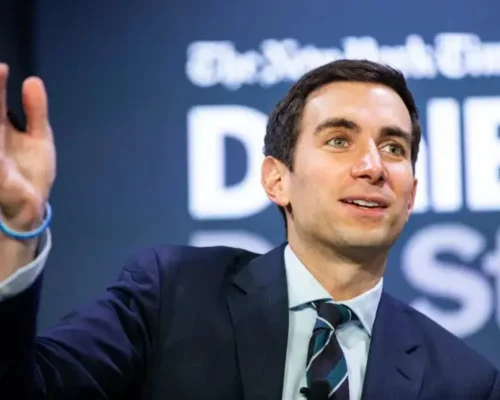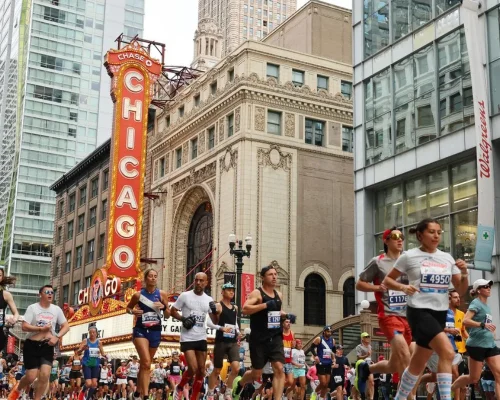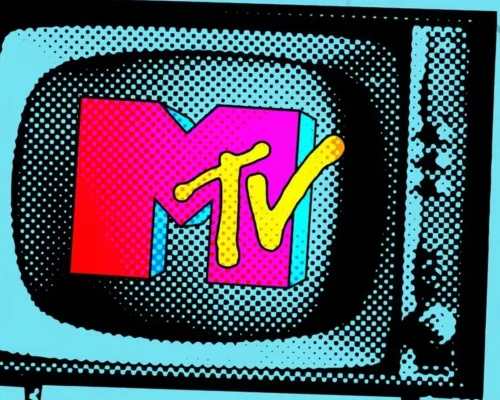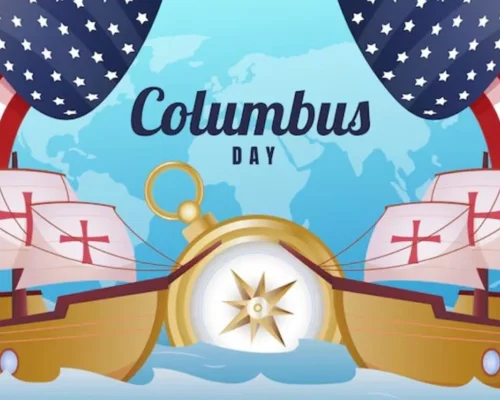Envision a crisp autumn morning in 1492: Three weathered ships bob on an endless Atlantic horizon, their crews whispering prayers against mutiny and madness. Then, land , a chain of islands Columbus dubs the “Indies” , ignites a global pivot that reshapes empires, economies, and lives forever. Fast-forward to October 13, 2025, and that voyage sparks a federal holiday that’s anything but settled: Parades pulse through Little Italy neighborhoods while across town, Indigenous drummers honor resilience over “discovery.” Columbus Day isn’t just a long weekend; it’s America’s mirror, reflecting pride in exploration alongside reckoning with conquest’s scars. As debates rage from statehouses to social feeds, this 2025 edition feels electric. Will it evolve further, or double down on tradition? Dive in with us for the full story, from Genoa’s docks to your doorstep, and uncover why this day keeps America talking.
The Voyage That Changed Everything: Christopher Columbus’s Epic Journey
Christopher Columbus, born Cristoforo Colombo in Genoa, Italy, in 1451, wasn’t chasing fame; he was hunting for fortune. By the late 1400s, Ottoman expansion choked Europe’s spice routes to Asia, spiking prices and sparking a naval arms race. Portugal’s Bartolomeu Dias rounded Africa’s Cape of Good Hope in 1488, but Columbus pitched a bolder bet: Sail west across the Atlantic to hit the East’s back door. His math was off; he underestimated Earth’s girth by thousands of miles, but Spain’s Ferdinand and Isabella bankrolled it anyway, fresh off their 1492 Reconquista victory.
On August 3, 1492, Columbus set sail from Palos de la Frontera with the Niña, Pinta, and Santa María, 90 souls strong. After a grueling 33 days, plagued by storms, scurvy scares, and near-revolt, they spied land on October 12: Guanahani, or San Salvador in the Bahamas, as he renamed it. Over seven weeks, he charted Cuba and Hispaniola, bartering gold and parrots while claiming lands for Spain. Returning in March 1493 laden with “exotics” and captives, Columbus sparked the Columbian Exchange: Crops like potatoes fueled Europe’s boom, but at a human cost we’ll unpack later.
Three more voyages followed, 1498 to Trinidad and Venezuela, 1502 to Central America, establishing footholds that ballooned into empires. Columbus died in 1506, blind to his “New World” blunder, but his logs lit the fuse for conquest. For Americans in 2025, it’s a reminder: One man’s shortcut became history’s superhighway, for better and for worse.
From Hero’s Welcome to Federal Holiday: The Evolution of Columbus Day
Columbus lingered in obscurity until the 18th century, when Enlightenment thinkers romanticized him as a visionary bucking Old World chains. Washington Irving’s 1828 biography portrayed him as a persecuted genius, helping to shape American identity after the Revolution. Here was a “self-made” explorer unbound by kings, mirroring the young republic’s ethos.
The first U.S. commemoration hit in 1792: New York’s Columbian Order threw a bicentennial bash with parades and toasts, tying it to national pride. But Italian immigrants supercharged it. Facing discrimination, peaking in the 1891 New Orleans lynching of 11 Italians, communities rallied around their Genoese son. President Benjamin Harrison’s 1892 proclamation marked the quadricentennial with school flags and speeches, a balm for ethnic tensions.
By 1937, amid Great Depression-era labor pushes, Franklin D. Roosevelt signed Columbus Day as a federal holiday, October 12 fixed, championed by the Knights of Columbus to honor Catholic roots and Italian heritage. The 1971 Uniform Monday Holiday Act shifted it to the second Monday in October, creating three-day weekends but sparking debates over uniformity. Today, October 13, 2025, it’s a patchwork: Federal workers off, post offices shuttered (though shutdowns complicate it), banks closed, but schools and stores often hum along.
Key Milestones in Its American Journey
- 1792: First organized fest in NYC, blending patriotism with spectacle.
- 1892: Harrison’s one-off national nod amid Italian-American advocacy.
- 1937: FDR’s federal stamp, cementing it as a paid day for many.
- 1971: Monday pivot for weekend warriors, now standard for 2025.
This evolution mirrors America’s: From immigrant uplift to inclusive introspection.
Honoring Italian Roots and Exploration Pride: The Positive Side of Columbus Day
For millions of Italian-Americans, descendants of 4 million who arrived between 1880 and 1920, Columbus Day is a heritage heartbeat. Parades snake through New York’s Mulberry Street, Columbus statues gleam in Ohio’s Little Italys, and feasts feature sausage heroes and cannoli. It’s a nod to contributions: From DiMaggio’s bats to Cuomo’s policies, Italian grit shaped the U.S. mosaic.
Beyond ethnicity, it’s an exploration’s anthem. Columbus embodied risk, betting life savings on uncharted seas, echoing pioneers who tamed frontiers. The holiday spotlights the Age of Discovery’s boons: tomatoes revolutionizing Italian cuisine and chocolate, with Aztec roots, sweetening American palates. In 2025, amid STEM pushes, it’s a teachable pivot: Curiosity conquers, even if calculations falter.
Events and the vibe: Chicago’s Columbus Day Parade draws 100,000 with floats and folk dancers; San Francisco’s (pre-2020 statue topples) blended Italian fest with history walks. For families, it’s low-key: Picnics, flag-waving, tales of three ships under stars. In a divided era, it unites around a shared adventure, proving that holidays heal as much as they honor.
The Dark Legacy: Facing the Shadows of Colonization
But glory’s glow dims under scrutiny. Columbus’s journals brim with brutality: On day one, he marveled at Taíno hospitality, then kidnapped six for “servants,” deeming them ripe for conversion. Subsequent trips escalated: Enslaving thousands for Spanish gold mines, where 50% died en route; chopping hands from quota-missing natives; forcing Christianity via torture. By 1500, his governorship crumbled under abuse charges, and even the Crown recoiled.
The ripple? Cataclysm. Smallpox and measles, Old World gifts, wiped out 90% of Indigenous populations, from 50 million continent-wide to mere survivors. Taíno numbers plunged from 250,000 to hundreds in decades, fueling a slave trade that imported Africans by 1510. This “discovery” birthed genocide, land theft, and cultural erasure, legacies etched in the Trail of Tears and reservation confines.
Critics argue the holiday whitewashes this: Statues toppled in 2020 (Boston’s in the harbor!), schools ditching “discoverer” labels. For 2025, it’s reckoning time. Why celebrate a man who wrote, “Let us in God’s name go forward,” while chains clanked?
Brutal Footprints of Arrival
- Enslavement Onslaught: Thousands shipped to Spain; survivors toiled in Hispaniola’s hellish mines.
- Disease Devastation: Unseen pathogens halved the populations of the hemispheres over generations.
- Cultural Conquest: Forced baptisms erased languages, sparking centuries of resistance.
These truths demand we honor complexity, not caricature.
Indigenous Peoples’ Day: A Rising Tide of Recognition
Enter the counter-narrative: Indigenous Peoples’ Day, born in 1977 at a UN conference, honors pre-Columbian civilizations , from Maya math to Inca engineering. South Dakota pioneered state recognition of Native American Day in 1990; Berkeley, California, flipped to Indigenous Peoples’ Day in 1992.
By 2021, President Biden proclaimed it federally, urging reflection on “resilient, diverse” Native contributions amid injustices. Now, 17 states and D.C. observe it, six as paid holidays, seven commemorative. Minnesota mandates dual nods; New Mexico went full swap in 2021.
In 2025, it’s momentum: Alaska’s bilingual events blend Yup’ik dances with policy talks; Oklahoma’s Native American Day spotlights 39 tribes. For urban Natives, 1.5 million off-reservation, its visibility: Powwows in L.A., storytelling in Chicago. This shift isn’t erasure; it’s equity, celebrating 15 million pre-1492 inhabitants who stewarded lands we call home.
States Leading the Shift
- Full Replacements: Maine, Vermont, New Mexico, D.C., paid days for Indigenous focus.
- Dual Observances: Five states blend both, fostering dialogue over division.
- Unique Twists: Alabama triples it with Fraternal Day; Tennessee slides to post-Thanksgiving.
As awareness grows, 2025 could tip the scales more toward inclusive calendars.
What’s Open and Closed on Columbus Day 2025: Practical Pointers
Planning your Monday?
- Federal stamps: Post offices shuttered, no mail delivery , ship early. Most banks (FDIC-insured) close, but ATMs hum; stock markets? NYSE and Nasdaq trade as usual.
- Government gigs: Federal employees snag paid time off, but shutdowns mean some stay sidelined. States vary; 20 give state workers the day; others, nada. Schools? Patchwork: Urban districts often open for makeup days; rural ones, not so much.
- Retail roars: Walmart, Target, malls beckon with fall sales, Columbus Day blowouts on linens and luggage. Airlines? Full throttle, but book ahead for weekend warriors. UPS and FedEx deliver; Amtrak runs normally.
Pro tip: Check local proclamations, Virgin Islands swaps for Puerto Rico Friendship Day; Hawaii skips both for Discoverers’ Day. Amid debates, it’s your call: Parade or powwow?
Quick 2025 Rundown
- Closed: Federal offices, USPS, most banks.
- Open: Retail giants, stock exchanges, UPS/FedEx.
- Variable: Schools, state agencies, verify locally.
Logistics aside, it’s a breather to ponder deeper divides.
Reflections on a Holiday in Flux: Why Columbus Day Matters in 2025
As October 13, 2025, dawns, Columbus Day embodies America’s tug-of-war: Pride in progress versus pain of plunder. Italian feasts clash with Indigenous vigils, but tension breeds growth; museums now pair Columbus exhibits with Native voices, and schools teach “encounter” over “discovery.”
For a nation of immigrants and originals, it’s a prompt: How do we honor bold sails without saluting shackles? Biden’s dual nod signals progress; statues repurposed as conversation starters hint at healing. In election-season heat, it spotlights equity. Will 2026 see more states pivot?
Ultimately, this holiday wasn’t frozen in 1492; it’s evolving with us. On Columbus Day 2025, grab a cannoli, join a drum circle, or reflect: Columbus Day 2025 invites all to chart a course toward understanding. What’s your take this year? The conversation’s just beginning.





